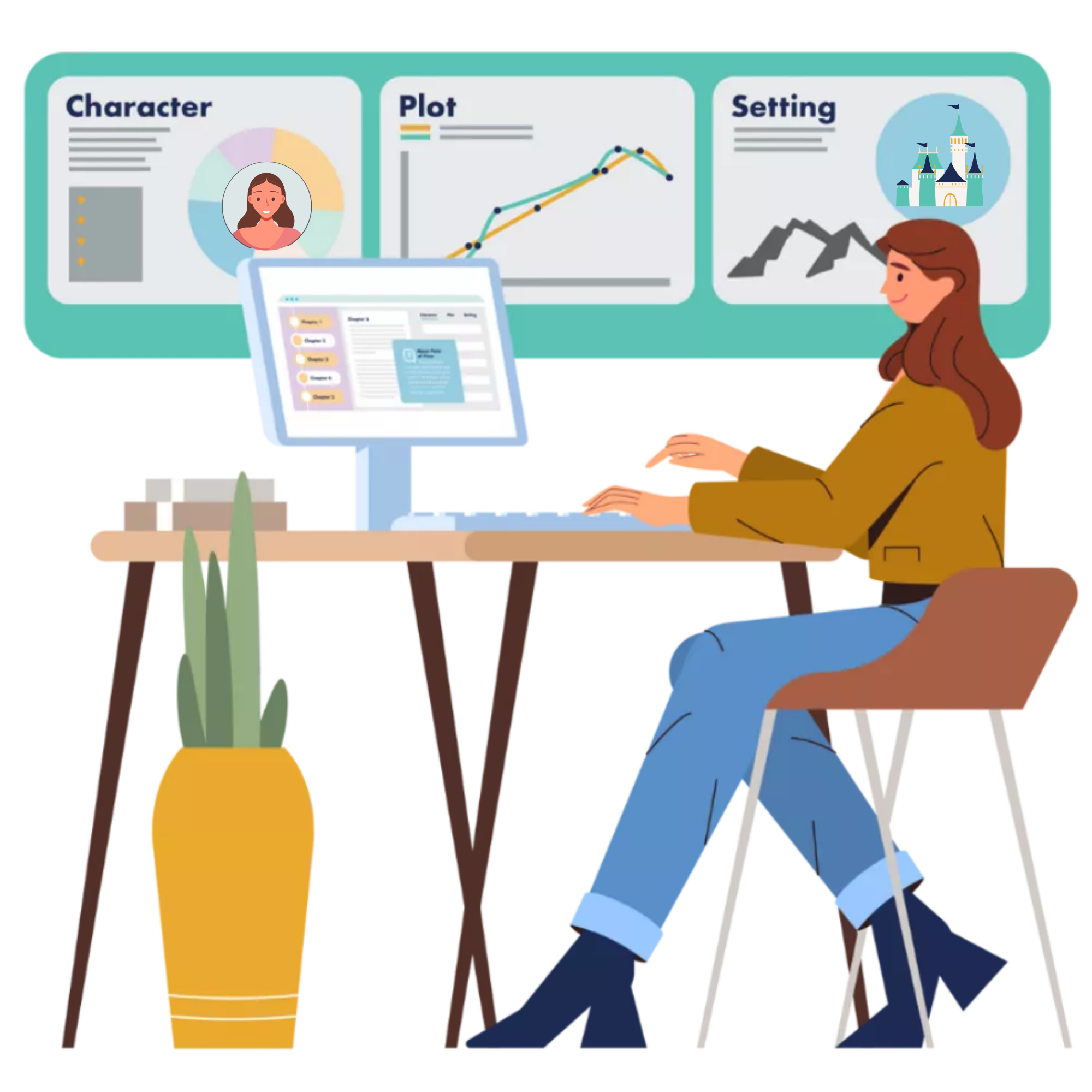
A reader connects with a story’s characters; they are who the reader follows through the story. Kristina Stanley talks about that connection with her fantabulous blog here. And there are, according to E. M. Forster, two types of character in a novel: round characters and flat characters.
Characters breathe life into a story, characters stride through the story, chasing after goals, after lovers, after murderers, after treasures. And as a reader, we love a well-rounded character that we connect with, that we recognize parts of our own nature, and the complexities we all wrangle with.
In stories, there is another type of character; one that should be loved too, as they are there for the story. They are solid characters: they are flat characters.
Knowing how to edit a flat character round—and a round character flat—is an important part of how to use your character editing tool kit. First, we will look at where the round and the flat characters come from, then why they are important to your story.
Flat Character Definition
Flat Characters do not surprise. The reader only gets to know one side of their personality. And that’s the key to understanding how to write a flat character. As E M Forster says, if you can sum up a character in a simple sentence, then they are flat characters.
Some writers, like Dickens, wrote some characters that were wholly flat. These characters are memorable beyond the story, who can forget Miss Haversham or Mrs. Micawber. Some writers write flat characters who have the potential to be round characters, but we only ever get hints of that—Jane Austen’s Lady Bertram.
So why not have all characters as round? The protagonist does not need to always be competing for the reader’s attention with the minor characters. And flat characters are shortcuts to memorable characters that sum up one aspect of human nature.
Flat Character Example
There are loads of awesome flat characters in popular literature. Each of them can be summed in a single sentence. Here are a few of our favorite examples:
- Crabbe and Goyle from Harry Potter: Nasty sidekicks who help Malfoy carry out his plans.
- Gandalf from Lord of the Rings: The good wizard who helps the hero complete his mission.
- Cinna from The Hunger Games: The kind and brave stylist who supports and helps the hero.
- Esme from Twilight: A selfless mother figure who acts as a voice of reason.
What Is a Round Character?
Round Characters are characters that can surprise you when you are writing and reading. The reader gets to know multiple sides to the character, and those sometimes-opposing personality traits make for interesting reading. This builds reader tension by not knowing which character trait will win in the scene, or even the story.
Knowing when to show the parts of the character’s personality is key to getting these characters right. If you want to learn how to show them, there is a blog here. Most modern protagonists are round characters, as modern readers prefer a protagonist that can surprise them. Here is a blog that talks about a flat character protagonist, Ariel.
Round vs Flat Character Origin
E.M. Forster wrote A Room with a View. What a book. What a kiss—swoontastic.
And E. M. Forster also wrote Aspects of a Novel. What a book. What advice—fantastic.
Together, let’s look at some of that almost 100-year knowledge, understand its ramifications, and then turn the theory into actionable editing insights. How brilliant is that?!
Let’s look at how E. M. Forster defined round characters and flat characters.
How to Edit a Round or Flat Character
Let’s hone our skills by learning how to edit round characters and flat characters, so we do so with ease.
If you want to edit your round character into a perfect sphere but are having trouble, then read on! You can edit those round characters easily when you know what makes them round.
Please do not shun flat characters, as when used well, flat characters can make your writing soar. And as with anything that needs to fly, when we come to edit our work, we will check, cross check, and trust in our story instincts.
Self-editing is the most fun you can have with your work. That glorious first draft is full of potential reader energy; I love every first draft for that very reason. And the editor, and self-editor, turns all first draft potential into kinetic reader energy.
There are three simple steps for editing round or flat characters.
STEP 1
|
STEP 2
|
| You need to look at every scene and see which character is in which scene.
Keep a note of these.
Once you have these, you have created your character list.
|
Choose any character from your character list
E. M. Forster’s Test: Can you sum up the character in a simple sentence?
Yes. Yay, now you know this is a flat character. or No. Yay, now you know this is a round character.
|
STEP 3
FOR ROUND CHARACTERS
Once you have chosen who to edit, look at that character in every scene. Make a note if they show only one distinct part of their personality from scene to scene. If a meant-to-be round character shows only one side to their character—this is a great editing catch.
For your revision, you need to show more sides to this character.
FOR FLAT CHARACTERS
This time, if you are choosing a flat character, also look at them in every scene. Do they show different parts of their personality from scene to scene? If a meant-to-be flat character shows many sides to their character—you have found a brilliant editing catch.
For your revision, you need to edit out the different sides to this flat character.
Writing Round Characters Tips
With Fictionary, you write better fiction faster. So many successful writers are BFFing Fictionary.
If you need to find out which character is in which scene, then Fictionary’s Character List is there to help.
If you want to keep a track of their emotional impact—how they react in each scene: does it vary or stay consistent with each emotional impact—use the Emotional Impact Fictionary Story Elements. Use the story map for overviews, then re-use these Emotional Impact Fictionary Story Elements for each character you edit.
Fictionary software makes the editing process a total joy.
Join the Fictionary Community
Once your cast of characters are all consistently round or flat through your entire story, you have turned some of your WIP potential into true Reader Kinetic Energy.
You can see how easy it is to edit for E. M. Forster’s two types of character. And there are so many other easy edits, which we discuss over in the phenomenal Fictionary Community.
Come along to the Fictionary Community where you will find other ways to strengthen your characters, perhaps look at their character arcs here.
And tell us all about your WIP—where it is right now and where you want it to be!


